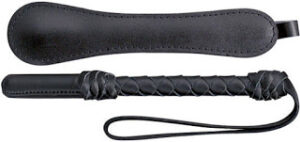
Recently I was doing some research on the SOE and the Home Guard Auxiliary Units. The Auxiliary units were a uniformed force that in the event of an invasion were to conceal themselves in occupied territory and conduct a campaign of sabotage. The equipment list of the auxiliary units made for interesting reading. One list I came across included a number of “knobkerries”. This probably refers to World War One vintage trench clubs that have been discussed in another blog. Such weapons would be an obvious compliment to the commando knives and other stealthy combat systems the Auxiliaries were issued with. Another list contained an entry for “rubber truncheons” instead. There are times when an enemy may need to be subdued without excessive bloodspill or fatal results.
“Rubber truncheon” is quite an evocative phrase nowadays. In the first half of the 20thcentury a number of police forces issued hard rubber batons. This was probably the source of the Auxiliary unit weapons. Such batons seem to have fallen from favour and as is often the case the reason may be more political than practical.
Many years back I wrote an article on blackjacks and saps. These can be a useful defensive tool for a police officer but have become controversial. Blackjacks have been used as scapegoats, with the weapon conveniently blamed for the misconduct of some users.

Blackjacks and saps effectively divide into two types. One type is circular in section and often has a coil spring in its shank. The other type is a flattened “beavertail-shape”. If there is a spring incorporated in this second type it will be a flat leaf spring.
The round-type have a noticeable snap to them since the spring allows the head to accelerate faster than the head of a rigid weapon of similar short length. The spring of the flat-type does not seem to contribute as noticeably to the force as the coil spring model. The beavertail-shape does allow the force to be spread over a wider area, reducing the chance of serious injury. The flat-type also gives you the option of striking with the edge when necessary, which is useful on some bulkier target areas such as large muscle groups.
I concluded that the ideal sap/blackjack would have a coil spring combined with a flattened head. As far as I know, no one has attempted to make such a model, or if they have they have not bothered to credit or contact me!
Encountering the idea of truncheons made from rubber or rubber-like materials got me thinking about blackjacks once again. Why not a modified beavertail-shape moulded from hard rubber or a synthetic modern equivalent? Much easier to manufacture than a leather, lead and spring weapon. If the stem was made in a square or circular cross section the weapon would gain the benefits of acceleration whether striking with the edge or the flat.
Police officers need more less-lethal options. The blackjack can be concealed discretely in the hand and brought into action when there is insufficient time to draw a nightstick or handgun. Used correctly it can end aggression with minimal damage.

It occurred to me last night that the resulting rubber sap might actually resemble a dog's bone-shaped toy!



